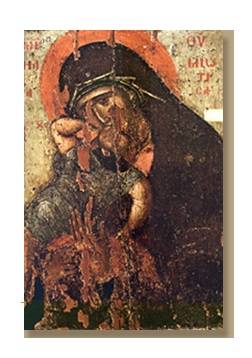
Miraculous icons of the Mother of God: Avramiotis
In honor of the Glorious and Most Blessed Glorious Mistress of our Mother of God and Prisnodje Maria
The miraculous icon of the Mother of God, called Avramiotis, dates back to the time of Emperor Dušan and Emperor Lazar Hrebeljanović, from the 14th century. It is also known as the icon of Emperor Stefan (Dušana).
By the way, the epithet of this icon indicates its connection with the famous non-handmade icon in the Avramiot Monastery in Constantinople.
We could say that it symbolically points to three scenes from Abraham's life. His meeting with the angels, his hospitality and his sacrifice; not in an illustrative sense, but in a symbolic sense.
Just as the Old Testament events are the foreshadowing of the New Testament events, so is the relationship between Abraham and Isaac, the foreshadowing of the sacrifice of the God-child for our sins, which awaits Him, and which we celebrate at the Liturgy in the Holy Mystery of the Eucharist, which was instituted at the Last Supper.
The miraculous icon of Avramiotis is Lithian - on its back, St. is painted. the prophet Elijah.
Tradition says that Emperor Dušan, when he went to conquer Ser(ez), a small town that is today located some 69 km from Thessaloniki, took her from Bitola and came with her to the city he wanted to conquer; Otherwise, holy icons are often carried at the head of church liturgies and military campaigns. A strong city fortification stood in front of him and his army, and he ordered that towers and other siege devices be brought up to the walls, to which the other side responded by placing crosses and icons on the city walls. Seeing this, Emperor Dušan then issued the command for an attack and marched on the city, with crosses and icons. The Greeks started shooting arrows at them, and Emperor Dušan ordered the army to return.
Wonders
During the battle for the city of Ser, a Greek nobleman, born Latin, called Kavolar deliberately fired an arrow and hit the Avramiotis icon from the back, where the Prophet Elijah was painted. Then blood flowed from the hit icon as if from living flesh, and in the next moment, carried by the Divine power, the icon of the Mother of God rushed towards the city and destroyed the fortification, after which the Serbian army easily entered the city and took control of it.
After the miracles performed by the Mother of God with her miracle-working icon, the venerable nobleman Kavolar accepted the Orthodox faith and became a monk.
Education
This icon is believed to be the work of an unknown Greek painter.
It shows a wonderful play of light and shadows that does not reduce the strength and expressiveness of the colors, although there are some damages on it, due to the possible transmission of the ravages of time.
It reminds of another miracle-working Hilandar icon, which is called Vozigranija Mladenac.
The God-child Christ is depicted in the arms of the Mother of God, in her embrace as if playing, caressing. His head is pressed against the face of the Mother of God and He touches her face with His left hand.
A different interpretation that they would give, can refer to the very position of His Reverend Body towards the Mother of God - which does not represent an exclusive embrace, but as if He, even though God through whom everything came to be - is asking for help, pointing out something to Her and with His hand on Her head and turns his gaze to focus on what is happening around them.
Emperor Dušan covered the miracle-working icon of Avramiotis with Arab gold, silver and precious stones because of the miracles it performed during the battle, and his consort, Empress Jelena, placed her wreath with precious stones, pearls and fervent prayers on the icon. Decorated in this way, the royal couple presented it to the monastery of Saint Sava (Hilandar) in 1347/8. Mr.
Elsa Bibić
Literature
1. Group of authors: "Hilandar Monastery", MCP IIU, Svetigora, Rotografika, pp. 50,51;
2. Bishop, Velimirović Nikolaj: "Prologue", Orthodox Church Municipality - Linz, Grafika Šabac, 2001. page: 570;
3. Orthodox website: www.hilandar.info, Iconography in the 14th century, dated September 15, 2016. l. G. entrance at 10:00, exit at 10:35;
PHOTOS
RELATED ARTICLES
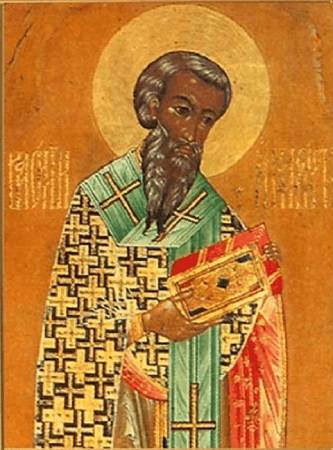
Calendar for May 9 His Homilist Basil of Amasia
Licinius, the son-in-law of Emperor Constantine, whose sister he had married,...
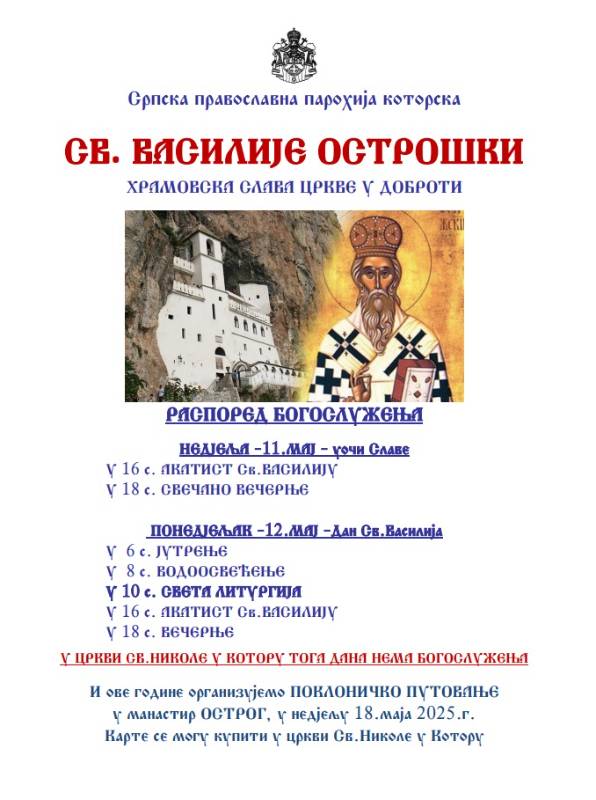
WORSHIPS ON THE OCCASION OF ST. VASILIJE OSTROŠKI
SERBIAN ORTHODOX PARISH OF KOTOR ANNOUNCES WORSHIPS ON THE OCCASION OF ST....
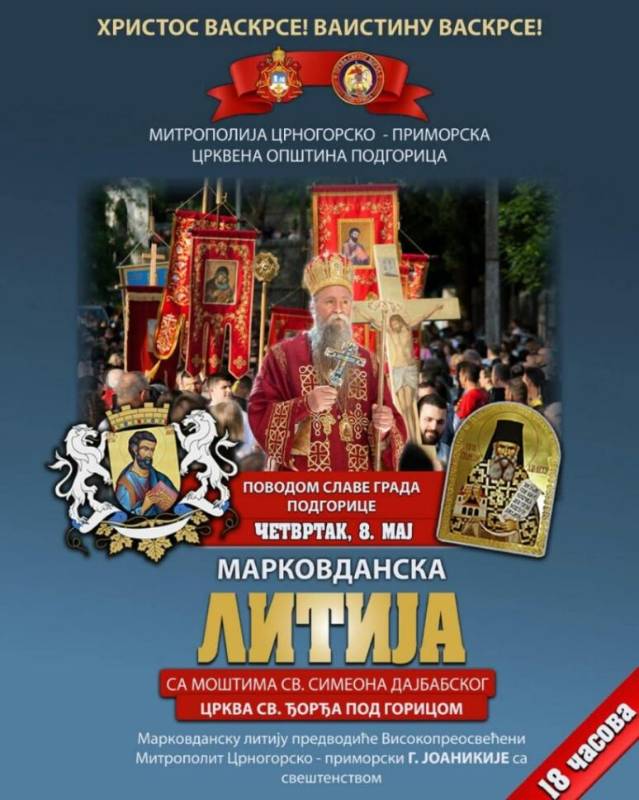
St. Mark's Day procession in Podgorica
On the occasion of the celebration of the city of Podgorica, the...


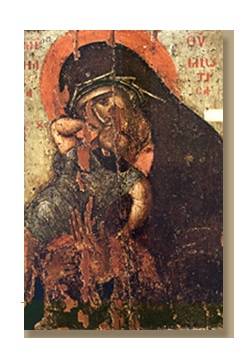

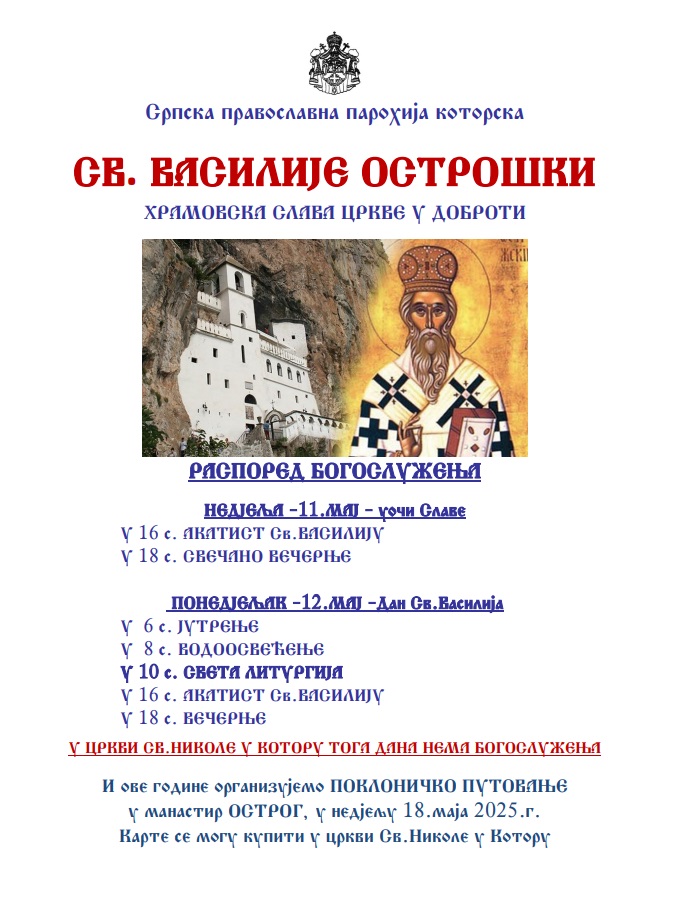
.png)